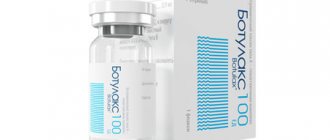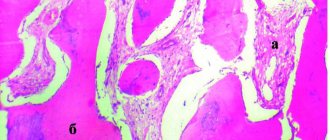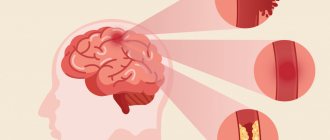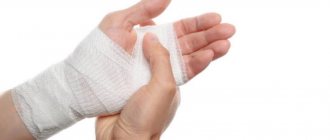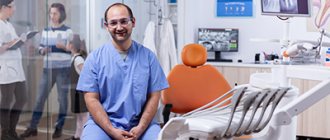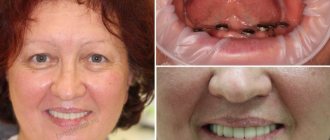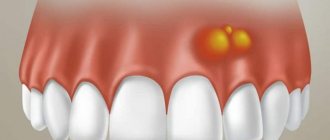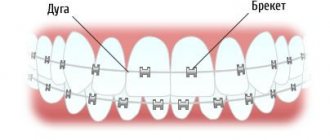Bruxism and hypertonicity of the masticatory muscles are inextricably linked processes. Bruxism is a condition when the muscles of the jaw involuntarily spasm, as a result of which a person begins to grind his teeth. There is an increased tone of the masticatory muscles.
Very often, this problem becomes a serious obstacle to dental procedures, such as implantation, prosthetics, and installation of veneers. Bruxism can interfere with quality orthodontic treatment. Increased tone of the jaw muscles overloads the implants, and dentures are destroyed much faster.
Bruxism also has a negative effect on “native” teeth. The enamel is damaged and worn away, and the teeth become loose. Therefore, if such a problem arises, it is necessary to look for ways to solve it. Thanks to modern medicine, you can get rid of bruxism for a long time.
Symptoms of bruxism and the main causes of hypertonicity:
- the surface of the teeth grinds down, they become flatter;
- the enamel is damaged, fillings fall out, teeth begin to loosen, their integrity is violated, the gums become raw and bleed;
- crunching and clicking appears in the jaw when opening and chewing;
- teeth grinding occurs when a person sleeps;
- it is difficult to open and close your mouth, you feel tired and overstrained masticatory muscles;
- you often unconsciously clench your jaw, most of the time they are tense;
- malocclusions appear;
- the lower part of the face takes on a square shape;
- posture worsens.
Development of the disease
A provoking factor appears that causes a single muscle tension. Constant hypertonicity gradually develops into spasm. Pain weakens the muscle over time as the person tends to use the muscle less. The result is a decrease in muscle tone
. Against this background, compensatory tension of the muscle located on the opposite side of the jaw develops.
With muscle pain syndrome, the patient experiences constant pain in the area of the masticatory muscles, which intensifies with movement of the lower jaw. When closing and opening the jaws, a clicking sound is heard in the TMJ. Visually, zigzag deviations of the jaw to the side or forward are observed. Bruxism develops
. Sometimes pain syndrome manifests itself in the upper jaw, sinuses, superciliary arches, and ringing or noise in the ears develops.
Botulinum therapy as a method of treating bruxism
Botulinum therapy is effectively used to relieve overstrain in the masticatory muscles, fights bruxism and can relieve involuntary teeth grinding at night.
In medicine, as in cosmetology, botulinum toxin type A is used. It is able to immobilize a muscle or relieve tension in it, acting locally. This effect lasts only for a certain period of time. But during this time the body manages to get used to the new state, and the overstrain disappears completely.
Botulinum toxin type A is a neurotoxin produced by the bacteria Clostridium botulinum. It is capable of blocking impulses from the central nervous system sent to the muscles. In fact, botulinum toxin paralyzes them, breaking the connection between muscle fibers and the brain.
The drug is injected into the required areas, so it has an effect exclusively on the desired areas. Dosages of butolotoxin are completely safe, and its effect is reversible. After six months, it is completely eliminated from the patient’s tissues.
About trismus
Trismus can occur at any time, immediately after or even years after treatment. This condition may occur in the following cases:
- if you have a tumor affecting the bones, muscles and nerves that control the opening of your mouth;
- after surgery on the head and neck organs;
- after radiation therapy in the head and neck area.
Trismus can occur when fibrosis (scarring) develops during the healing process of tissue after surgery. In addition, fibrosis may worsen years after radiotherapy.
If you cannot open your mouth wide enough, it will be difficult for the health care provider to examine your mouth. In this regard, problems may also arise with:
- oral hygiene (keeping the mouth clean and brushing teeth), which can lead to bad breath, tooth decay and oral infections;
- chewing and swallowing, which may make it difficult for you to eat and drink;
- speech;
- kisses;
- insertion of a breathing tube, for example if you ever need general anesthesia (a drug given to keep you asleep during an operation or procedure);
- carrying out routine dental treatment.
When trismus occurs, its treatment is very difficult. This is why it is important to prevent trismus and treat the condition as early as possible.
to come back to the beginning
Main stages of treatment
The first step is preparation for the procedure. It's simple. For a few days, it is necessary to eliminate alcoholic beverages from the diet, and also reduce caffeine consumption. Before the procedure, you should not take antibiotics or blood thinners.
The second step is the introduction of butolotoxin. The procedure lasts about twenty minutes. The required dose is divided into three to four injections. The injection needles are very thin, so the procedure is virtually painless.
The third step is the rehabilitation period. Butolotoxin acts instantly, but gains its full strength after two weeks. After injections, it is not recommended to overheat or cool the treated areas. Sports and facial massage should be excluded.
Diagnostics
In the vast majority of cases, the diagnosis of PTA is made clinically, based on the results of pharyngoscopy (examination of the pharynx). It is confirmed by obtaining purulent discharge during drainage of the abscess or by instrumental studies (most often ultrasound).
Pharyngoscopy reveals a swollen and/or fluctuating tonsil with deviation of the uvula in the direction opposite to the lesion, hyperemia (redness) and swelling of the soft palate. In some cases, there is plaque or liquid discharge in the palatine tonsil. There is an increase and tenderness of the cervical and submandibular lymph nodes.
Bilateral PTA is extremely rare and its diagnosis is more difficult due to the lack of asymmetry in the pharynx, as well as the rarely present spasm of the masticatory muscles.
Laboratory tests are not required to make a diagnosis; they are additionally prescribed to determine the severity of the disease and select a treatment method.
Laboratory tests may include:
- general blood test with leukocyte formula;
- study of electrolytes (potassium, sodium, chlorine) for signs of dehydration;
- strepta test to exclude GABHS;
- culture for aerobic and anaerobic bacteria if the abscess was drained (culture is recommended only for complicated PTA, recurrent PTA, or in patients with immunodeficiency conditions).
Instrumental examination methods - ultrasound, computed tomography, lateral neck x-ray, magnetic resonance imaging or angiography - are not necessary and are performed to exclude other diseases if the diagnosis of PTA is not obvious.
Implantation for bruxism
Implants can be placed if an integrated approach has been taken to the procedure. In cases where the dental system has not worked correctly for a long period of time, dentists perform treatment using complex implantation.
If excessive tension in the jaw muscles was caused by a reason such as psychosomatics, then the patient is referred for examination to a specialized specialist. Only then can you begin to restore your teeth.
How to treat trismus of the masticatory muscle?
Treatment involves the following steps:
- jaw immobilization;
- elimination of the disease or condition that caused trismus;
- taking medications with a relaxing effect (neuropsychic stimulants);
- taking antibiotics;
- the patient takes sedatives;
- Physiotherapy is recommended.
If trismus is caused by an inflammatory process in the mouth, the dentist sanitizes the lesion (for example, opens an abscess), cleans the hole and, if necessary, removes the tooth along with the root.
Prevention of bruxism
Preventive measures for hypertonicity of the masticatory muscles of the jaw imply measures that can prevent bruxism. Treatment of this disease without diagnosis and examination by a qualified specialist can be hazardous to health. As soon as you notice the first signs of this pathology, you need to consult a doctor as soon as possible. He will prescribe diagnostics that will help identify a possible problem and effectively eliminate it.
The patient may need to be examined by specialists such as a neurologist or psychotherapist. Increased tone of the masticatory muscles has different etiologies. Doctors in these areas can prescribe various treatments, such as physical therapy, magnesium-based medications. All this is decided on an individual basis.
Preventative measures may help if approved by the patient's physician. You can easily massage the cramped areas. There is a set of exercises that can reduce the manifestations of bruxism. They must be done daily before going to bed.
Stressful situations must be avoided. You should rest more, get enough sleep, and spend a lot of time outdoors. Avoid caffeine and take baths with herbs that have a sedative effect. These measures will be an excellent prevention of muscle spasms, and will also enhance the effect of complex treatment.
Contact the Denta-Labor dental laboratory for solutions to issues regarding the protection of your teeth during bruxism.
Jaw Information
The jaws are a pair of bones that form the base of the mouth and teeth (see Figure 1).
- The maxilla is the upper jaw bone.
- The mandible is the lower jaw bone.
- The temporomandibular joint is where the lower jaw attaches to the skull.
- The masseter muscle is the muscle that connects the lower jaw to the skull.
Figure 1. Bones and muscles of the jaws
The opening and closing of the mouth is controlled by many muscles and nerves located around the jaws. Most people can open their mouth 35–55 millimeters (1.4–2.2 inches), which is the width of three fingers (see Figure 2).
Figure 2. Normal open mouth height
to come back to the beginning
Treatment of peritonsillar abscess
In case of a complicated course, children (especially young children) are indicated for hospitalization and treatment in a hospital setting.
The main treatment method for PTA is systemic antibacterial therapy. In severe cases, severe intoxication, difficulty swallowing, nausea, antibacterial therapy is prescribed parenterally (bypassing the gastrointestinal tract) with subsequent transfer to oral forms of drugs - until the completion of the 14-day course of treatment. Courses of antibiotic therapy for less than 10 days increase the likelihood of disease relapse.
After prescribing systemic antibiotic therapy, dynamic observation for 24 hours is recommended. It is acceptable in patients with suspected paratonsillitis, without obvious signs of PTA, without signs of airway obstruction, sepsis, severe spasm of the masticatory muscles, or other signs of a complicated course of the disease. And also in children under 7 years of age with small abscesses and rare episodes of acute tonsillopharyngitis in history.
Studies have shown that systemic antibiotic therapy is effective even without draining the abscess. According to available data, 50% of children responded to systemic antibiotic therapy and did not require abscess drainage or tonsillectomy.
Systemic antibacterial therapy should include antibiotics active against GABHS, Staphylococcus aureus and respiratory anaerobes. For PTA, amoxicillin-clavulanate, ampicillin-sulbactam, and clindamycin are most often prescribed. If there is no or severe response, vancomycin or linezolid is added to treatment to ensure optimal coverage of potentially resistant Gram-positive cocci.
